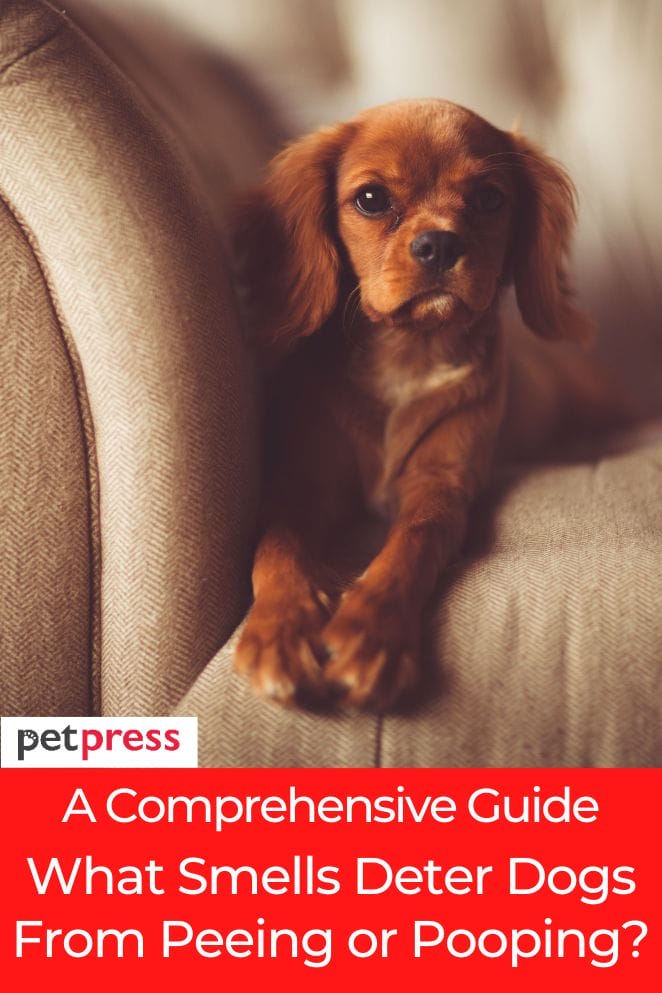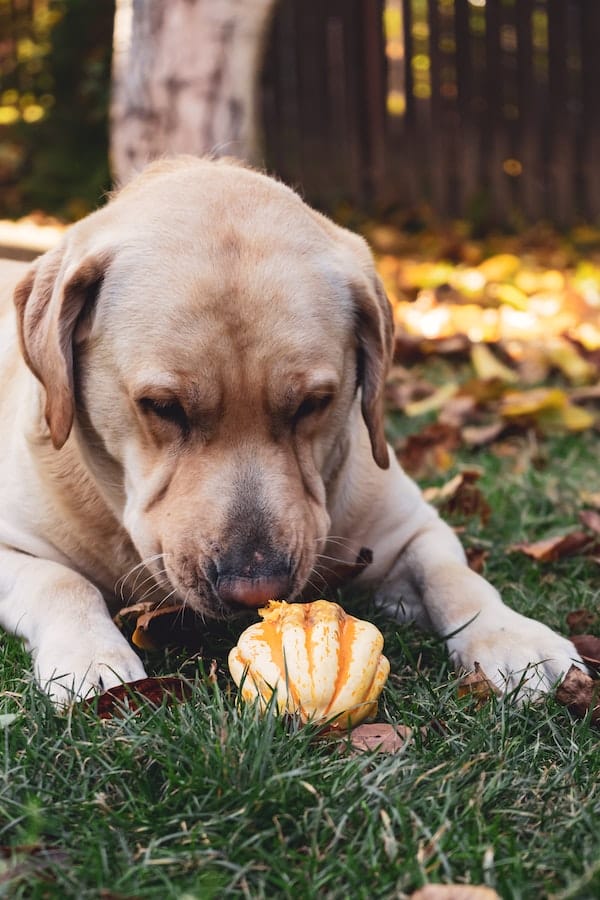
Dog owners frequently face the challenge of deterring their cherished pets from marking their territory in undesirable areas.
While training stays the best approach, there are sure aromas that can go about as hindrances, keeping dogs from peeing or pooping in defecating spots.
In this blog post, we will dive into these smells and deal with practical advice on saddling their repellent properties to guide our furry companions toward more appropriate habits.
The Smells That Deter Dogs

The smells that repulse dogs are normally those of different animals or people.
These smells go about as an advance notice sign for our dog companions, telling them that another creature is present nearby and possibly representing a danger.
Here are probably the most widely recognized scents used to ward dogs off:
Citrus scents
Citrus smells can be a compelling method for deflecting dogs from specific areas.
The strong, tart smell is unpleasant to a dog’s sensitive nose and will frequently incite them to create some distance from the source.
Well-known citrus-scented deterrents include lemon, orange, and lime oils, which can be splashed in areas where pets are not wanted or invited.
Vinegar
Vinegar is one more typical smell that can be used to get dogs far from specific areas.
The strong fragrance of vinegar has a sharp, harsh chomp that most animals find as distasteful.
Vinegar can be mixed with water and sprayed in space or put on cotton balls and set around the edge of off-limit zones.
Simply make sure to try not to use distilled white vinegar, which can shape a dangerous surface and represent a safety hazard for your pet.
Ammonia
Ammonia is another generally used aroma that dogs will quite often keep away from.
The strong smell of ammonia has a bitter quality that dogs frequently find unpleasant.
It very well may be sprayed in areas where you don’t want your pet should visit or sprinkled on cotton balls and put around the border of off-limit zones.
However, it is essential to take note that while ammonia is effective to deter dogs, it can likewise be unsafe whenever overused or breathed in enormous amounts.
It is best used sparingly and with caution.
Mothballs
Mothballs are a typical instrument used to get digs far from specific areas.
The strong smell of naphthalene, the active ingredient in mothballs, is terrible to most creatures and will frequently repel them.
Nonetheless, it is important to take note that mothballs are poisonous and ought to just be used with alert.
They can likewise be challenging to eliminate whenever they have been set, making them not ideal for long-term use.
Chili pepper
Chili pepper is one more compelling fragrance to hinder dogs from specific areas.
The sharp smell of chili peppers can be disconcerting for a dog’s sensitive nose, and they will usually create some distance from the source.
Chili pepper flakes or powder can be mixed in with water and sprayed in a space, or put on cotton balls and set around the border of an off-limit zone.
However, it is important to take note that chili pepper can be destructive to both humans and animals whenever overused or breathed in enormous amounts.
Thusly, it ought to just be used with alert.
Essential oils
Essential oils are a famous technique for discouraging dogs from specific areas.
Certain essential oils like cedarwood, citronella, and eucalyptus have strong smells that can be obnoxious to animals.
These oils can be used in more than one way: they can be showered straightforwardly onto an area or mixed in with water and splashed; they can likewise be put on cotton balls and set around the edge of an off-limit zone.
While essential oils are for the most part safe to use, it is critical to practice with alertness while involving them close to creatures as some might have adverse responses.
How to Use These Smells as Repellents

Involving these scents as repellents is somewhat direct.
For citrus aromas, place new strips or use citrus-based splashes in the areas you need to protect.
For vinegar, mix one section of vinegar with one section of water and splash it around the area.
Chili pepper can be sprinkled around, yet make sure to sparingly use it.
Ammonia can be utilized similarly to vinegar, however, make sure it’s very much used and utilized in all-around ventilated areas.
For essential oils, use a diffuser or mix a couple of drops in with water and spray it around.
To guarantee that these repellents are effective, following a couple of key steps is important.
Identify the areas where you need to deter your pet from
It is critical to identify the areas where you need to stop your pet before applying any of these repellents.
Not only will this assist to ensure that the smell reaches every necessary spot, yet it can likewise assist with keeping your pet from associating the unpleasant smell with being in a specific area or room.
Furthermore, ensure that all smells used are safe for your pet, as some might represent a safety hazard whenever used inappropriately.
Ensure all ingredients you use are safe for animals and humans
While using any of these fragrances to deflect pets, it is vital to ensure that all ingredients used are ingredients for both animals and humans.
Citrus-based repellents are for the most part thought to be ok for both, although essential oils can represent a well-being risk if not properly weakened or applied in proper sums.
Moreover, using ammonia or vinegar, ensure that they are very much weakened and used only in all around ventilated areas.
Finally, take care of any sort of pesticide or bug spray with intense caution around both creatures and humans.
Reapply as needed
Lastly, it is important to reapply these smells as needed to get unwanted animals far from specific areas.
Depending on the strength of the fragrance, the repellent might be applied once every few days or up to one time each week.
Furthermore, in a particular area that is prone to visits from unwanted animals, it could be useful to use numerous fragrances at once to make an all the more remarkable hindrance.
By following these steps, you will actually want to get your pet far from unwanted areas while as yet keeping a healthy and cherishing relationship with them.
Conclusion
Managing a dog’s tendency to check its territory in unwanted areas can be challenging, however, there are effective and sympathetic techniques to put this behavior down.
By using scents that dogs normally find unpleasant, you can divert their bathroom habits to more suitable areas.
It’s essential to approach this training process with persistence, consistency, and the direction of an expert if necessary.
Keep in mind, making a happy and polite furry companion is inside your span.


GIPHY App Key not set. Please check settings